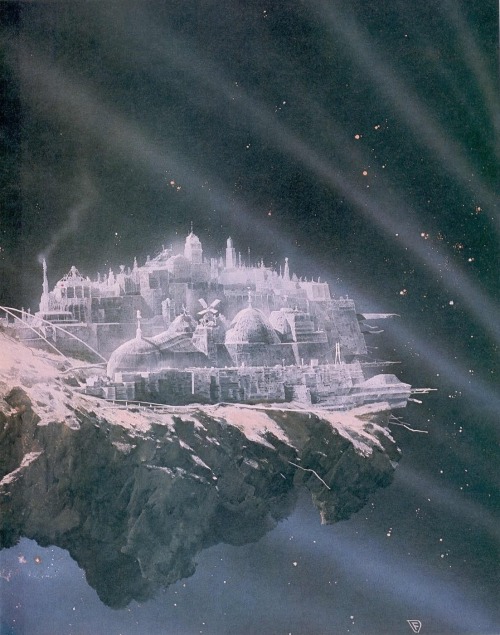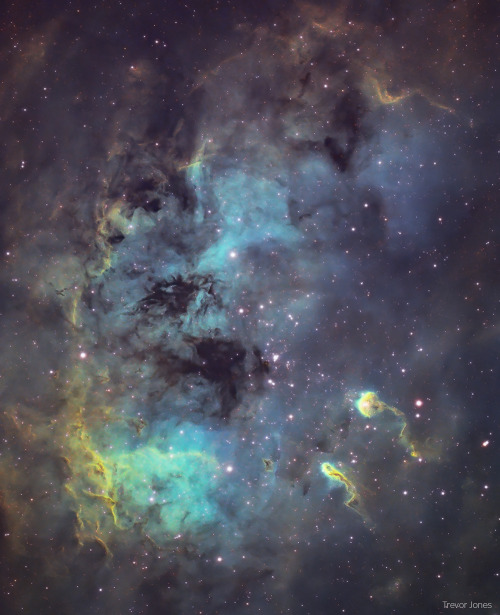Nuclear Winter And The End Of The Arms Race: Carl Sagan Interview (1991)
Nuclear Winter and the End of the Arms Race: Carl Sagan Interview (1991)
A powerful and prophetic interview, as always, with Professor Sagan. Contrary to the video’s title, topics discussed range from science education, nuclear disarmament, economics, and critique of America. Sagan responds to queries from callers.
More Posts from Epic-flight and Others

What we are doing while you sleep


Behold our beautiful Moon as seen from lunar orbit during the Apollo 15 mission, August 2, 1971.
Boo-tiful Ring Galaxies

A ghoulish secret lurks within each of these gorgeous galaxies. Their rings are dotted with stellar graveyards!

These objects are called ring galaxies, and scientists think most of them form in monster-sized crashes. Not just any galaxy collision will do the trick, though. To produce the treat of a ring, a smaller galaxy needs to ram through the center of a larger galaxy at just the perfect angle.

The collision causes ripples that disturb both galaxies. The gravitational shock causes dust, gas, and stars in the larger galaxy’s disk to rush outward. As this ring of material plows out from the galaxy’s center, gas clouds collide and trigger the birth of new stars.

In visible light, the blue areas in the galaxies’ rings show us where young, hot stars are growing up. Faint, pink regions around the ring mark stellar nurseries where even younger stars set hydrogen gas aglow.
The newborn stars come in a mix of sizes, from smaller ones like our Sun all the way up to huge stars with tens of times the Sun’s mass. And those massive stars live large!
While a star like our Sun will last many billions of years before running out of fuel, larger stars burn much brighter and faster. After just a few million years, the largest stars explode as supernovae. When massive stars die, they leave behind a stellar corpse, either a neutron star or black hole.

When we turn our X-ray telescopes to these ring galaxies, we see telltale signs of stellar remnants dotted throughout their ghostly circles. The purple dots in the X-ray image above are neutron stars or black holes that are siphoning off gas from a companion star, like a vampire. The gas reinvigorates stellar corpses, which heat up and emit X-rays. These gas-thirsty remains are beacons lighting the way to stellar graveyards.
Spiral galaxies — like our home galaxy, the Milky Way — have curved arms that appear to sweep out around a bright center. The dust and gas in those spiral arms press together, causing cycles of star formation that result in a more even mix of new stars and stellar corpses scattered throughout our galaxy. No creepy ring of stellar corpses here!
To visit some other eerie places in the universe, check out the latest additions to the Galaxy of Horrors poster series and follow NASA Universe on Twitter and Facebook for news about black holes, neutron stars, galaxies, and all the amazing objects outside our solar system.
Make sure to follow us on Tumblr for your regular dose of space: http://nasa.tumblr.com

Richard Bizley

Chris Foss

The Tadpoles of IC 410 : This telescopic close-up shows off the central regions of otherwise faint emission nebula IC 410, captured under backyard suburban skies with narrowband filters. It also features two remarkable inhabitants of the cosmic pond of gas and dust. Below and right of center are the tadpoles of IC 410. Partly obscured by foreground dust, the nebula itself surrounds NGC 1893, a young galactic cluster of stars. Formed in the interstellar cloud a mere 4 million years ago, the intensely hot, bright cluster stars energize the glowing gas. Composed of denser cooler gas and dust, the tadpoles are around 10 light-years long and are likely sites of ongoing star formation. Sculpted by stellar winds and radiation their heads are outlined by bright ridges of ionized gas while their tails trail away from the cluster’s central young stars. IC 410 lies some 10,000 light-years away, toward the nebula-rich constellation Auriga. via NASA


”I didn’t feel like a giant. I felt very, very small.”
–Neil Armstrong on looking back at the Earth from the Moon in July 1969.
(Sources: 1, 2)
-
 epic-flight reblogged this · 4 years ago
epic-flight reblogged this · 4 years ago -
 holodrome liked this · 4 years ago
holodrome liked this · 4 years ago -
 cornballer reblogged this · 4 years ago
cornballer reblogged this · 4 years ago -
 muedebranch liked this · 4 years ago
muedebranch liked this · 4 years ago -
 muedebranch reblogged this · 4 years ago
muedebranch reblogged this · 4 years ago -
 orulunkvincent liked this · 4 years ago
orulunkvincent liked this · 4 years ago -
 mediumhigh liked this · 4 years ago
mediumhigh liked this · 4 years ago -
 nopregunteschiquida liked this · 4 years ago
nopregunteschiquida liked this · 4 years ago -
 panzerneck liked this · 4 years ago
panzerneck liked this · 4 years ago -
 kaijuhearmenow reblogged this · 4 years ago
kaijuhearmenow reblogged this · 4 years ago -
 aportraitoutofplace liked this · 4 years ago
aportraitoutofplace liked this · 4 years ago -
 daddysprettythings liked this · 4 years ago
daddysprettythings liked this · 4 years ago -
 monstafaith liked this · 4 years ago
monstafaith liked this · 4 years ago -
 dustbunnyck liked this · 4 years ago
dustbunnyck liked this · 4 years ago -
 nocturnal liked this · 4 years ago
nocturnal liked this · 4 years ago -
 sagansense reblogged this · 4 years ago
sagansense reblogged this · 4 years ago


